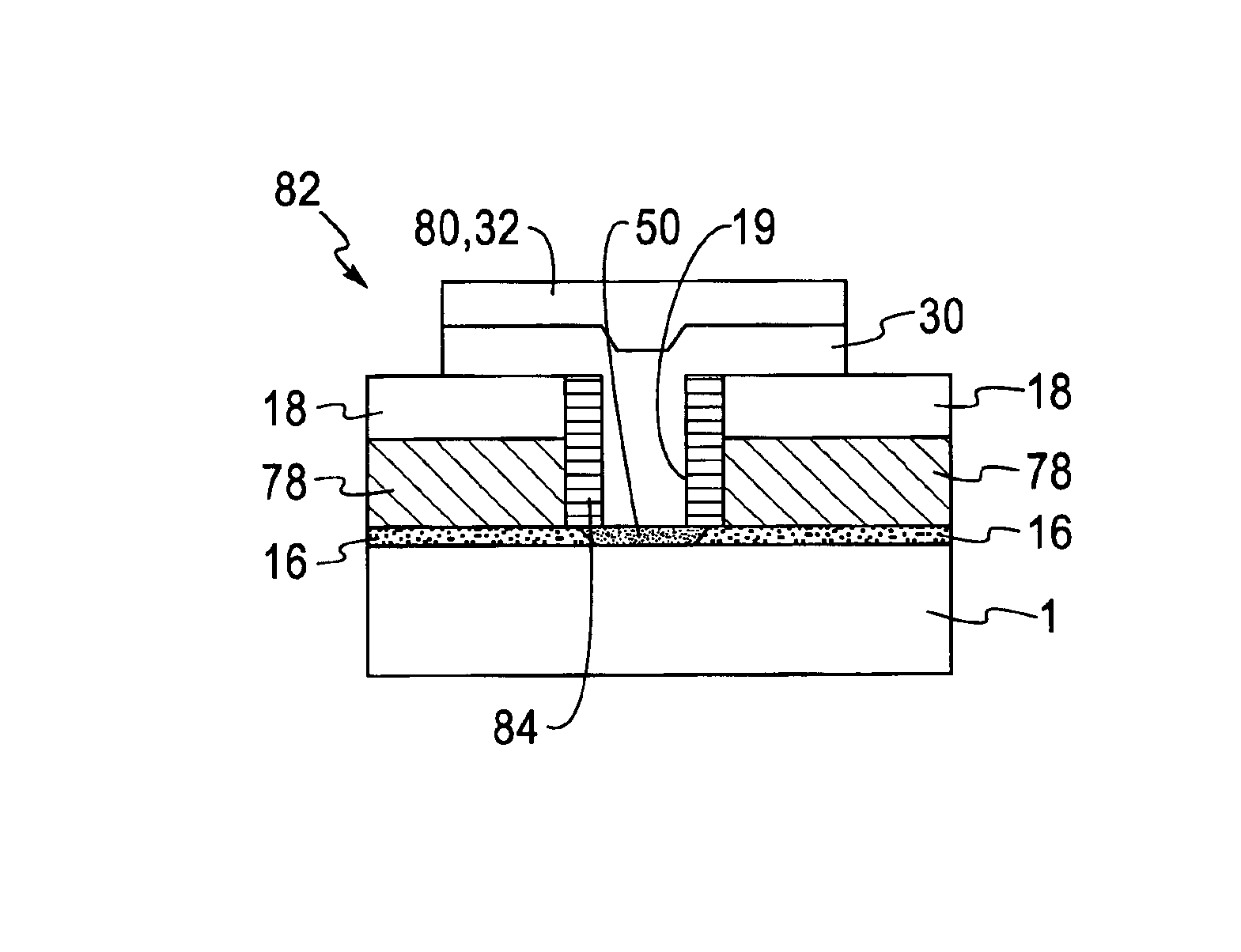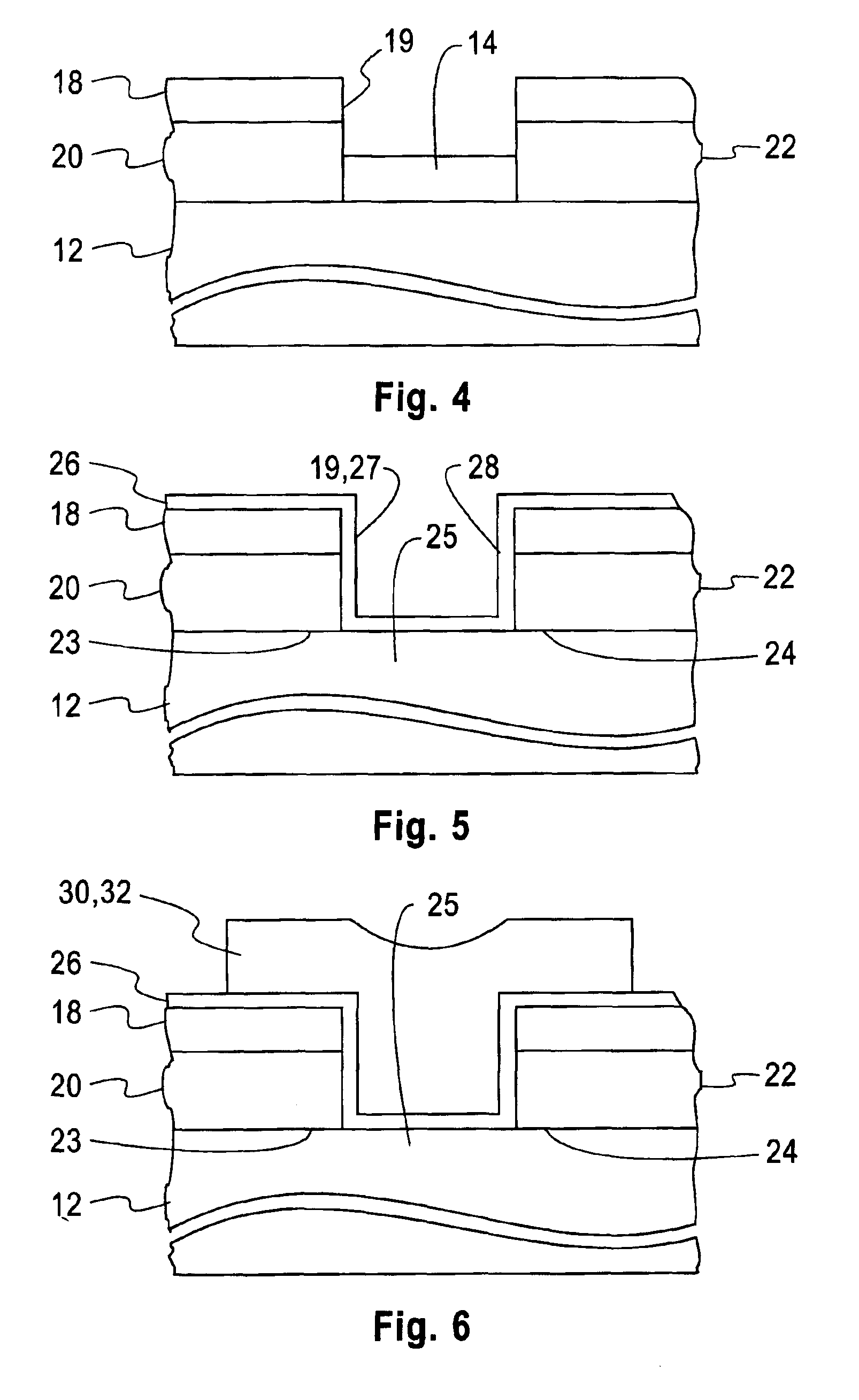Scalable MOS field effect transistor
a field effect transistor and mos technology, applied in the field of self-aligning metal oxide semiconductor (mos) field effect transistors, can solve the problems of slow device gate resistance, incompatibility of above process with manufacturing, short circuit of gate with ohmic source/drain contact, etc., and achieve the effect of relaxing the scaling limit on the gate dielectric thickness
- Summary
- Abstract
- Description
- Claims
- Application Information
AI Technical Summary
Benefits of technology
Problems solved by technology
Method used
Image
Examples
Embodiment Construction
Referring now to the drawing, FIG. 1 shows a cross section view of substrate 12, a sacrificial layer 14, a metal layer 16 which subsequently forms a Schottky barrier or junction with respect to the channel, and an insulating layer 18. Substrate 12 may be a single crystal semiconductor material suitable to form the channel of a MOS FET to be built. Substrate 12 may be, for example, silicon, silicon germanium, germanium, gallium arsenide, indium gallium arsenide, indium phosphide, and indium gallium arsenide phosphide. Sacrificial layer 14 is of a material which may be selectively etched with respect to substrate 12 and which may be consumed by Schottky metal layer 16, for example, in the form of a silicide or germanide. Sacrificial layer 14 functions to protect the channel from reactive ion etching (RIE) damage. Sacrificial layer 14 may be for example silicon germanium with a germanium content x where x is equal to or greater than 0.3 and the silicon content is 1-x. Sacrificial layer...
PUM
 Login to View More
Login to View More Abstract
Description
Claims
Application Information
 Login to View More
Login to View More - R&D
- Intellectual Property
- Life Sciences
- Materials
- Tech Scout
- Unparalleled Data Quality
- Higher Quality Content
- 60% Fewer Hallucinations
Browse by: Latest US Patents, China's latest patents, Technical Efficacy Thesaurus, Application Domain, Technology Topic, Popular Technical Reports.
© 2025 PatSnap. All rights reserved.Legal|Privacy policy|Modern Slavery Act Transparency Statement|Sitemap|About US| Contact US: help@patsnap.com



